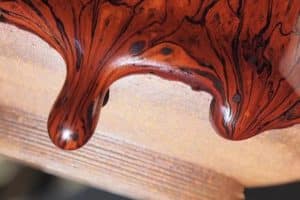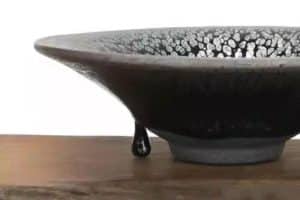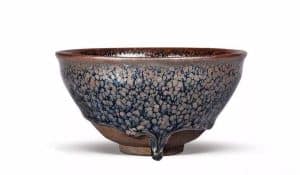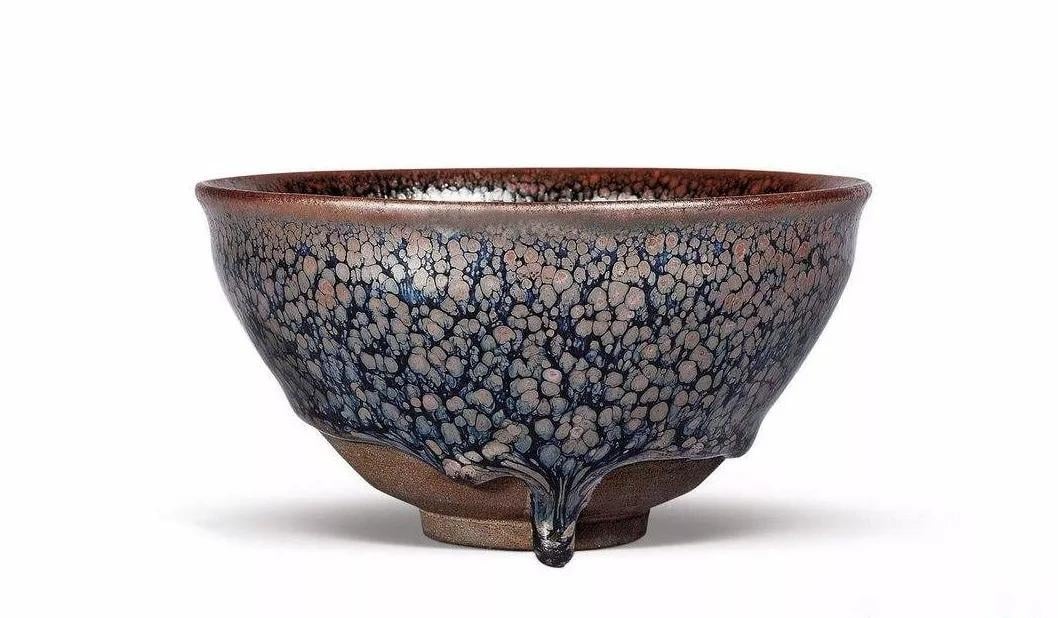Contents
The Causes of Jian Zhan Glaze Tears Formation
The Jian Zhan cup resembles a man, like a sword forged in the furnace, tempered by intense flames and high temperatures, developing a strong and unyielding character. It stands tall and fearless, with a bold and resolute personality. It exudes a sense of pride, determination, and cold distance, giving an impression of strength and aloofness.
Yet, all things have emotions. Just as fine tea is compared to a beautiful woman, even the iron-willed man is moved by the soft fragrance and elegance of tea. She awakens his tenderness, shattering the loneliness forged in the relentless heat of the kiln. A single tear forms—the glaze tear.

There is an old legend in Shuiji that glaze tears are born of emotion. It is said that they are the crystallized tears of a kiln worker’s childhood sweetheart, who wept when they parted long ago. These tears fell into the kiln and solidified into what we now call glaze tears, representing longing and love.
The Formation Principle of Glaze Tears
Jian ware’s black glaze is a type of crystalline glaze with high iron content, classified as lime glaze. Lime glaze has strong viscosity and tends to flow easily at high temperatures. Jian Zhan cups are fired upright in the kiln (a method known as zhengshao), which causes the glaze to thin at the rim due to gravity while accumulating at the bottom. Jian Zhan typically features partial glazing; when the glaze reaches a certain thickness on the cup’s surface, it begins to flow downward, creating what is known as “glaze tears.” When these tears hang but do not fall completely, they form a unique aesthetic. However, if too much glaze flows down to the base and sticks to the kiln shelf, it is considered a flaw. Many collectors are captivated by the beauty of these glaze tears and seek out cups that feature them.
To produce a perfect glaze tear, several conditions must be met:
- The kiln temperature must be sufficiently high—generally above 1250°C—to allow the glaze to flow smoothly.
- The amount of glaze applied must be just right; too much or too little can hinder the formation of glaze tears. If too little is applied, side-glazing issues may occur under high heat; if too much is applied, it may cause sticking at the base.
Glaze tears highlight Jian Zhan’s thick glaze and its fluidity while showcasing the beauty of black glaze and its crystalline structure. However, if too much glaze accumulates at the bottom, it may stick to the kiln shelf, so non-sticky glaze tears are considered aesthetically pleasing and demonstrate high craftsmanship. This is why seasoned collectors appreciate cups with glaze tears. Some less experienced collectors mistakenly view these tears as defects when in fact they are not.

Glaze tears are one of Jian Zhan’s defining features and represent both beauty and craftsmanship. Far from being imperfections, cups with beautiful patterns and glaze tears hold greater value for collection and appreciation.
Jian kilns typically use a dipping method to apply glaze in one go, resulting in thicker layers of rich glaze. The outer wall often receives only partial glazing to prevent sticking during firing; however, excess glaze can still flow at high temperatures, leading to hanging glazes—a phenomenon more common in older pieces. This can be attributed to thicker glazes used in older cups and less precise glazing techniques at that time. Some pieces were glazed evenly; others were only half-glazed or fully glazed at the base.

Another uncontrollable factor is temperature regulation in wood-fired kilns. In dragon kilns (longyao), where temperatures can run very high and conditions are intense, glaze tears form more easily—explaining why older pieces often feature fully glazed bottoms or hanging glazes.
Everything with tears has emotions; there exists a kind of tear called “glaze tear,” which has a name and life of its own. After enduring thousands of degrees in hidden darkness within the kiln’s flames, it emerges as its final tear—a mark left by its rebirth through fire. These tears embody the sweat and effort of potters; they also carry Jian Zhan’s deep connection to its kiln.

Why does Jian Zhan “cry”? No two Jian Zhan cups are identical. Some speculate that each cup is unique because it is solitary—perhaps it cries out of loneliness or perhaps from pride. Others say this tear is formed from the condensed sweat of potters.
Regardless of which explanation resonates most, this tear—seemingly about to fall but never quite doing so—touches our hearts deeply. Jian Zhan cups are not truly alone: during their rebirth in the kiln’s flames, they have many companions nearby; after firing, they sit alongside others on display shelves; once bonded with their destined owner, they remain accompanied by other tea wares.

At this point, we can no longer discern why Jian Zhan sheds its tear—there are simply too many possibilities. Just like unfinished pieces in the kiln hold countless potential outcomes, so too does this tear carry endless meanings.







